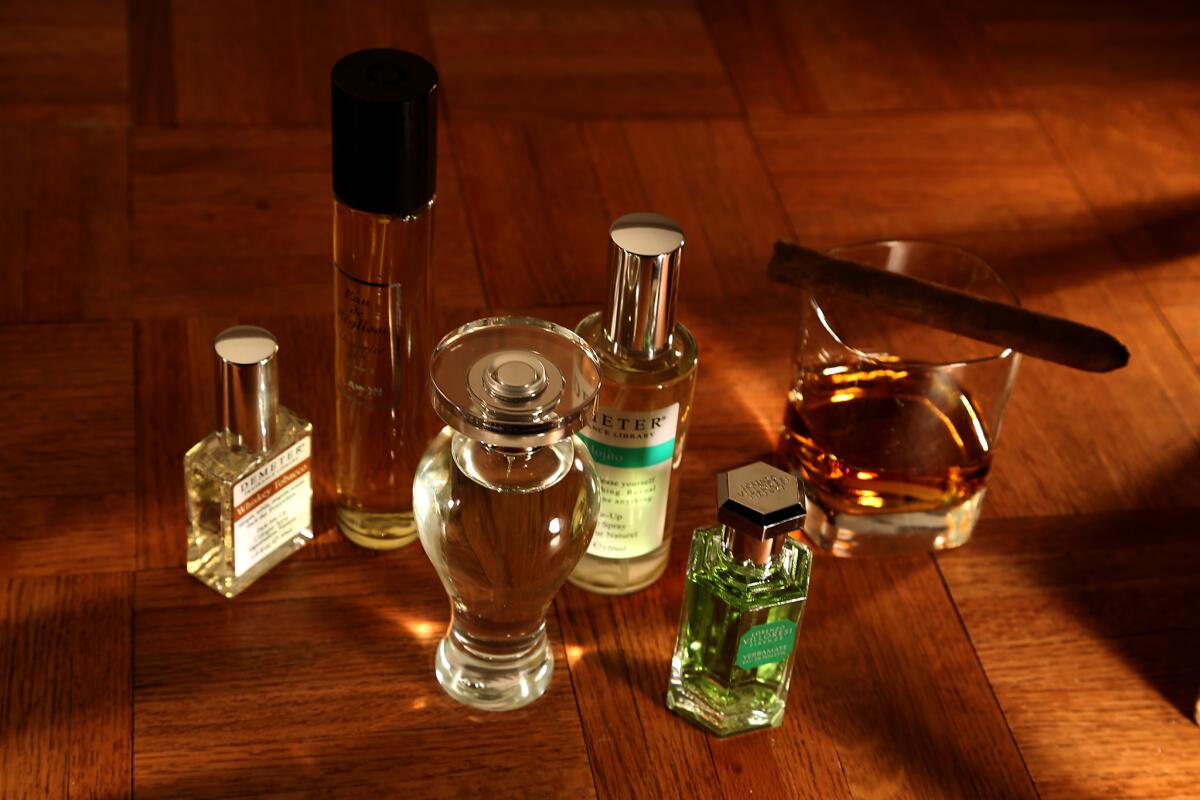The intriguing scents and business of mixing liqueur, wine, perfume

Smell is an important component of taste, which may explain why cocktail culture has seeped into the perfume world and purveyors of liqueur and wine have entered the perfume business.
When we enjoy a cocktail or savor fine wine, part of the enjoyment lies in the aroma. Whether it’s the icy juniper in gin or the peaty smoke of scotch, smell is an important component of taste, which may explain why cocktail culture has seeped into the perfume world and purveyors of liqueur and wine have entered the perfume business.
“As a perfume designer, I am always searching for themes that can have an olfactive translation.... Working on a Cognac-inspired scent was in my mind for a long time,” says Kilian Hennessy, a Hennessy Cognac heir who’s found success with an eponymous perfume line.
Christian Delpeuch, a managing director of Maison Ginestet, says his firm branched into perfumery because “we wanted to advance the primary aromas [that] are in wines of Bordeaux. Even the colors have been thought out.”
Ginestet’s Botrytis, named after the “noble rot” fungus on grape skins that boosts sugar concentration, is a honeyed orange blossom floral that may remind some of Sauternes dessert wines such as Château d’Yquem. To extend the vineyard analogy, the delicate flask is topped with a gold-foil grape leaf.
Industry watchers say the trend of infusing liqueur and wine notes into perfume isn’t surprising.
“The foodie movement has connected with the niche perfume movement in a very logical way since people who appreciate fine liqueurs and artisan coffees also appreciate artisan perfumes,” says Saskia Wilson-Brown, founder of L.A.’s Institute for Art and Olfaction.
Wilson-Brown says she’s also seen rising interest in cocktail aromas in the weekly perfume-making workshops the institute offers.
French wine and Cognac makers underscore the similarities between their business and perfumery. For both oenologists and perfume “noses,” scrupulous attention is devoted to terroir — the soil in which the grapes and flowers are grown; the harvest; and the production process.
The biggest poster boy in this field is Kilian Hennessy, who launched his line in 2007 with a handful of scents and now has more than two dozen, including Back to Black, a nod to the late Amy Winehouse, with notes of peaty smoke, aged Cognac, vanilla and oak barrels. And Hennessy recently unveiled his Addictive State of Mind collection, which includes Vodka on the Rocks, Apple Brandy and Lemon in Zest, inspired by the Italian liqueur limoncello.
Fascinated by scent as a child, Hennessy later apprenticed with the best noses in perfumery and eventually made fragrances for Christian Dior and Paco Rabanne. Striking out on his own, he sought to capture what Cognac makers call the “angels’ share,” the tiny percentage of alcohol that evaporates from cellars as the liqueur ages and is considered an offering to the gods.
The purchase of Kilian perfumes can also require wallets of the gods — they run $165 to $335 per bottle. But there are alcohol-related perfumes for every pocketbook. Demeter, which popularized everyday scents with Snow and Earthworm, offers $30 scents. Sake is a popular $60 perfume from Fresh, a line available at Sephora. Independent L.A. perfumer Opus Oils’ M’Eau Joe suggests a glamorous New Orleans speak-easy where the bourbon flows freely. Caron’s Eau de Reglisse is a bracing herbal apéritif. And the whiskey and vodka notes of Ambre Russe by Parfums d’Empire conjure up Pushkin striding off for a duel as his second scurries alongside with oiled pistols.
Most of these contemporary perfumes are unisex and reference the aromatic essence of drinks rather than a boozy drunk. The idea can be traced back to 1930, when Henri Alméras created Cocktail for Jean Patou. In 1955, the couturier Lubin brought out Gin Fizz in homage to the elegant beauty of Grace Kelly. But it took 80 years for the trend to catch fire. Now, Lubin has revived Gin Fizz, and UK cologne purveyors Penhaligon’s, inspired by British dry gin, recently launched Juniper Sling.
For today’s purveyors of wine and spirits, perfume isn’t necessarily a cash cow, but another channel to promote their brand. “Perfumes position the company in a luxury sector, of exigency and quality of French style that we are also in through to our wines,” says Laurent Dupin, Ginestet’s manager for fragrance sales.






